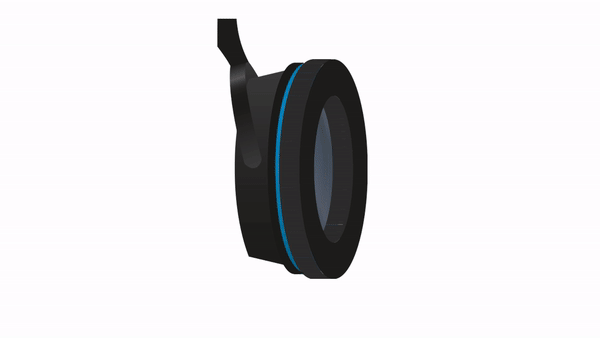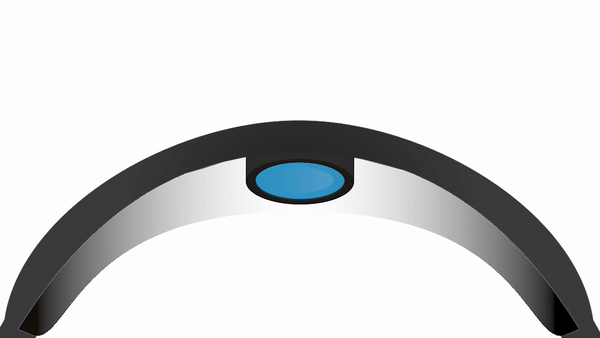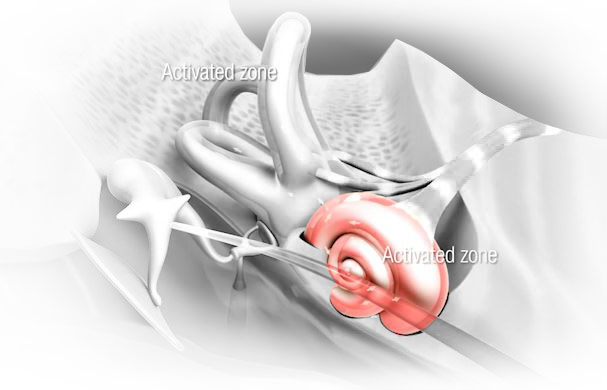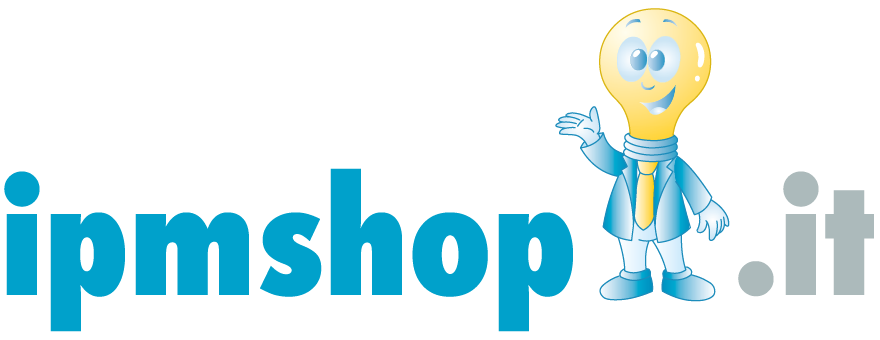The Bone and Air Conduction System of Soundsory
Soundsory® is a program that utilizes two modes of sound processing to stimulate the brain: air conduction and bone conduction. Through the use of audio headphones and body vibrations, Soundsory® offers comprehensive sensory stimulation that involves both systems. This combination aims to enhance sensory processing, attention, and motor skills. Soundsory® is designed to be a fun and engaging program suitable for people of all ages who wish to improve their cognitive and motor abilities.

Air Conduction
Sound is a vibration! When it travels through the air, we use the term "air conduction". When it travels through the bones of the body, we use the term "bone conduction". The latter occurs more effectively: try covering your ears and speaking normally. You will hear your voice perfectly clear because it travels mainly through the bones of the skull. Now try speaking louder and you can feel your whole body vibrate. Soundsory® transmits music through headphones equipped with both bone and air conduction. The music thus reaches the auditory and vestibular canals through the headphones positioned on each ear and through a vibration at the top of the skull.
Bone Conduction
Sound is transmitted directly to the inner ear without passing through the eardrum. Bone transmission is naturally 10 times faster than air conduction.
Bone conduction also better transmits low frequencies, which reach the vestibule directly through bone vibrations. The primary role of the vestibular system is to cope with gravity and contribute to the sense of balance and spatial orientation, aiming to coordinate movement with balance. The vestibular system is responsible for detecting changes in body movements, enabling constant postural corrections. Bone conduction enhances this function.

The dual sound transmission in two different modes (air and bone) is a key element of Soundsory®, training the brain to properly analyze the sensory sound message. Through the combined use of audio headphones and body vibrations, Soundsory® offers multi-sensory stimulation involving both systems. Air transmission occurs through the audio headphones, where the sound travels through the air and is picked up by the outer ear. In contrast, bone transmission uses body vibrations to transmit the sound directly to the cranial bones, bypassing the outer ear. This combination of air and bone transmission allows the brain to receive and process sound more comprehensively and effectively. Air transmission provides a traditional auditory experience, while bone transmission adds a tactile component that further stimulates the brain.
This process of multi-sensory stimulation helps the brain develop greater awareness and sound analysis capability, contributing to improved attention, cognitive, and motor skills. Additionally, the combination of these two sound transmission modes makes Soundsory® a versatile program suitable for a wide range of users, including children and adults.
How the Auditory and Vestibular Systems Work

The interconnected actions of the auditory and vestibular systems play an important role in coordinating movement and balance, which in turn affect brain function.
"Improving the accuracy of sensory information sent from the ear to its multiple connections throughout the nervous system"
The ear's function is to hear and listen to sounds and movements. This is called the vestibulocochlear system. The ear is not only an auditory organ that perceives sounds but also a motor organ that captures our movements and determines our balance, rhythm, and coordination. Try covering one ear while walking and you will experience a significant loss of balance. The auditory part of the inner ear is the cochlea. The motor part is the vestibular system.
The Cochlea and Its Function
The cochlea is deeply involved in speech processing and musical analysis. It is shaped like a snail covered in cells, arranged from the lowest to the highest pitch. Almost 80% of the total length is dedicated to receiving and analyzing high frequencies (from 800 Hz and up). The fact that a large percentage of cells is dedicated to perceiving high frequencies explains why high-frequency sounds provide more stimulation to the brain compared to lower frequencies.

The effect of the patented dynamic filter of Soundsory® is a distinctive element of the program that plays a fundamental role in modulating sensory stimulation. This dynamic filter is designed to accentuate high sound frequencies, allowing the brain to focus on these critical elements of sound. Since high frequencies often carry important information for language, communication, and attention, this filter aims to facilitate the brain's processing of these frequencies.
Through repeated listening experiences with the dynamic filter of Soundsory®, the brain progressively learns to discern and give more importance to fundamental frequencies. This learning process is crucial for developing cognitive and sensory skills, as it helps the brain better understand sound signals and respond more efficiently and effectively.
Moreover, since the dynamic filter gradually and controlledly emphasizes high frequencies, it promotes balanced and progressive sensory stimulation. This allows the brain to gradually adapt to the sound stimulation and maximize the benefits derived from this experience. Over time, this adaptation process enables the brain to optimize its ability to process important frequencies and gain the maximum benefit from the sensory stimulation provided by SOUNDSORY®.
What the Vestibular System Is and How It Is Involved with Soundsory
The vestibular system is heavily involved in posture and balance, as well as muscle tone, coordination, sense of rhythm, body scheme, spatial navigation, integration of both sides of the body, and motor planning. The vestibular system is responsible for detecting changes in body movements to enable constant postural corrections. It consists of the saccule, utricle, and three semicircular canals. The utricle and saccule are sensitive to changes in linear movements. The semicircular canals are sensitive to changes in rotational movement.
The vestibular system is highly sensitive to rhythm and movement. It is the organ that makes us spontaneously move our feet, hips, hands, and head when we listen to our favorite song.
The music of Soundsory® is specifically designed to be dynamic and emphasize rhythm. It provides strong vestibular stimulation. The effect is reinforced by the bone conduction technology implemented in Soundsory®. Indeed, the vestibular system captures the rhythm of sounds directly through this bone vibration, stimulating it more effectively than sound transmitted through air conduction.




